by successfulbob | infrared photography, landscape photography, Lumix G6, Lumix Lounge, photography, photography creativity, photography education, photography gear
While on the mountain trip we rode off through the wilderness. Can you say “Curvy Roads!” boys and girls?
Lots of winding roads through the area but it led to some beautiful places. I had the Lumix G6 that has been converted to Infrared capture by LifePixel. It gives the image a pinkish cast straight out of the camera. I’m starting to find my groove in processing for the final Infrared photo look I am going for…
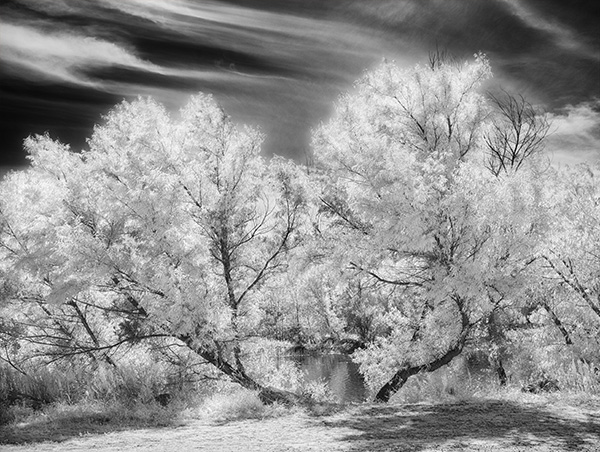
I enjoy how these trees framed a little window into the water beyond.
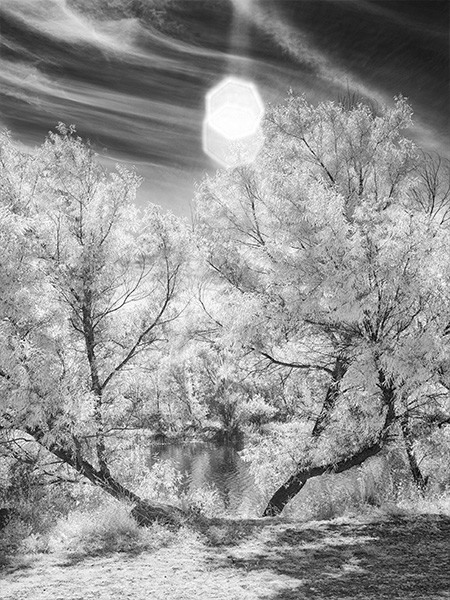
Same trees different composition with a witness to how careful you need to be in shielding your lens from a direct sun hit. Although in this case I think it’s a happy accident and enjoy the flare that found its way into the frame.
Here’s my workflow at the moment as I learn more how the camera ‘sees’ IR light. I capture the scene in RAW plus jpeg with the camera set to capture a black and white image. This give me a pretty good preview of what the IR image will look once it is processed. But since I am capturing the RAW images at the same time I also get all the information that was presented to and captured by the camera for tweaking in post processing. Having all the color information in different channels allows for some very specific processing that would not be available if only the Luminous information was saved.
In addition to the RAW plus jpeg I also bracket exposures. At the moment I am bracketing by seven stops to learn how far to over and/or under expose any particular scene.
Then I choose two of the separate RAW captures with one giving me the tones for the foliage and one for the sky. I process these in Adobe Camera RAW. Then using Masks I blend the two images together feathering the areas using the Brush Tool. I Save the file and merge all into a Layer on top preserving the Masked Layers just in case.
Then I take the file into NIK Silver FX Pro2 to process for Black and White because I still have the color information in the file I have more options for tweaking individual tones. Then I will process the color Layer one more time to vary specific areas even more. Then with the tow BW processed Layers I blend those together using Masks for the final tone blend. Then depending on the look I am going for I may process this Layer in NIK Color FX Pro4 using Glamour Glow and Mask those changes where necessary.
More IR images tomorrow.
Yours in Creative Photography, Bob
by successfulbob | bird photography, Lumix FZ 1000, Lumix Lounge, photography, wildlife photography
Had the opportunity to take a few days off and travel to the mountains of New Mexico near the town of Silver City. Stayed in a cabin in the woods with and old friend of ours from St Thomas, USVI… Reminds me of an old joke. “To the woods, to the woods!” “Anywhere but the woods!!” “ANYWHERE???” “To the woods….”
But I digress I did bring some cameras with me to play with.
Probably the best all around camera for travel and convenience from Panasonic is the Lumix FZ1000. I like if for it’s fast glass, range of 25-400mm with a digital zoom option to take it to 1600mm and super light weight about two and a half pounds. Here are a couple photos from the FZ near the cabin.
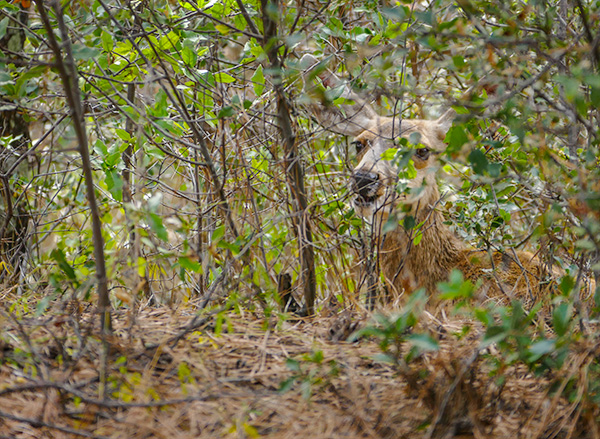
Nature’s camo! If I hadn’t had the camera set to a shallow Depth of Field that deer would be almost invisible.
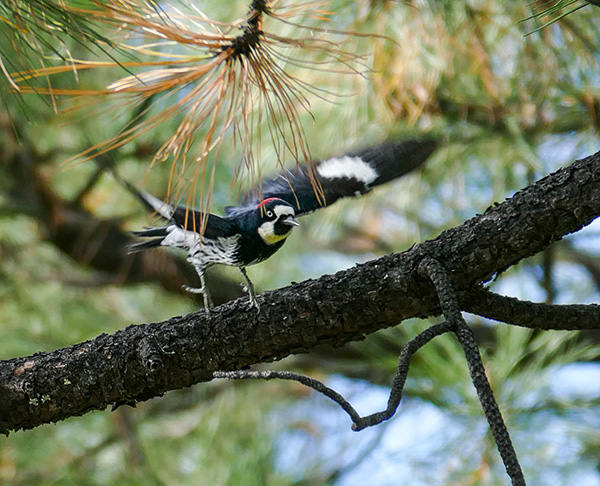
These woodpecker were flitting from tree to tree in search of their next snack. Having a high perch on an upper deck made photographing them relatively easy. The 400mm reach of the lens didn’t hurt either.
Don’t forget to take your cameras with you on holiday. It’s a great time to learn new settings that can help you get better images while not under any pressure…
Yours in Creative Photography, Bob
by successfulbob | photography, photography - art quote, photography education
Sometimes I head off on a tangent tapping into quotes from painters, writers, poets, coaches and others. Today let’s get back to a quote from a photographer. Former Magnum Photographer Wayne Miller documented war, black families and was a Life Magazine photographer among his other photographic endeavors.
A Time Magazine memorial article when 94 year old Miller passed away in 2013 started this way, “To photograph mankind and explain man to man — that was how legendary photographer Wayne Miller described his decades-long drive to document the myriad subjects gracing his work.”
Here’s the Photo Art Quote from Wayne that caught my attention.
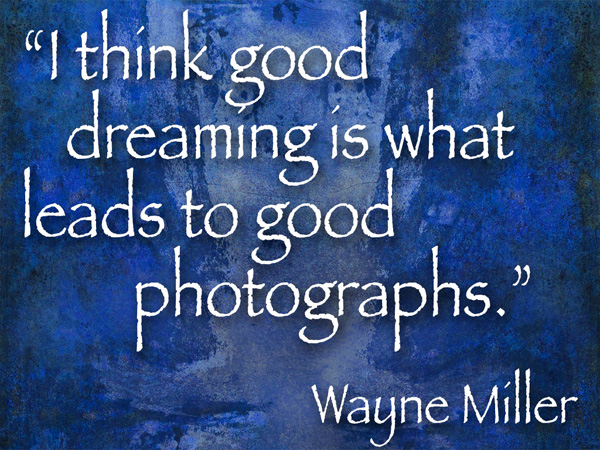
“I think good dreaming is what leads to good photographs.” Wayne Miller
Simple ten word thoughts like these lead me to do some searching to find a way to make my images stronger and a bit different from those that have created before me. I proudly say that i stand on the shoulders of those photographers that have come before me. Without them photography would not be what it is today. When you take strong ideas and then build upon them you come up with stronger images.
What is dreaming? According to Wikipedia, “Dreams are successions of images, ideas, emotions, and sensations that occur usually involuntarily in the mind during certain stages of sleep.” An idea to capitalize on your dreams is to work to retain them after the fact is to have a notebook and pen or recorder next to your bed. If you don’t jot down the ideas that come to you in dreams within a few moments of wakening they go out and become part of the ether again.
To my mind photographic dreaming is a culmination of all the information you place in front of your eyes. Movies, books, photographs, impressions from your travels and added to that your imagination mixing all of these elements together. This can also be done while you are awake to have more control. Give yourself permission to day-dream. I know it was probably knocked out of you at an early age with parents and teachers telling you to, “Stop woolgathering!” “Pay attention!” “Day-dreaming is a waste of time…” Now you don’t want to do it all the time, but you do want to let your mind wander and play. Playing is one of the best ways to learn and develop new ideas and concepts.
What do you dream about? Have you found ways to incorporate your dreams into your photography?
Yours in Creative Dreaming, Bob
by successfulbob | cloud photography, infrared photography, landscape photography, Lumix G6, Lumix Lounge, photography, photography creativity, photography education
Live, learn and practice some more.
This is the continuing story of learning to see and capture infrared images with my newly refurbished Lumix G6 camera from LifePixel where I added a straight IR filter to the camera… (see Part One or Part Two)
Photographing with a camera that has had it’s sensor replaced by with an infrared filter makes IR photography MUCH easier than the olden days of film when fogging a roll was easy and focusing not so much. But as with all things photography making it easier doesn’t necessarily lead to stellar results. You still need to learn to ‘see’ in infrared. A helpful tool is the use of photographing in RAW +jpeg. You can set the camera capture mode to black and white The capture is in color AND black and white. If you have what you need and are happy with the ‘natural’ in-camera capture in black and white you are ready to go…
So far I am not.
RAW file to the rescue. As you saw in part two there are multiple ways of addressing the final IR image and many ways to get to the final image you have in your brain. We still have the words of Ansel Adams to fall back on to create a more artistic rendition of a scene. Paraphrasing for today’s world here, ‘The RAW capture is the score, the processing and final print the performance.’ Just as a conductor can get more out of his orchestra but pulling exhorting his individual musicians to do their best we can manipulate each pixel in each color space to give us the tones we desire.
Some of the things I’ve dabbled with…
Two or three different processing pulls from the RAW files for different areas of the image.
NIK Silver FX Pro 2. to convert to black and white and tweak ‘colors’ into the tones I was looking for.
Channel Mixer Adjustment Layer after the file was open in Photoshop.
Black and White Adjustment Layer.
Hue Saturation Adjustment Layers.
And mixing and matching all of the above techniques to taste…
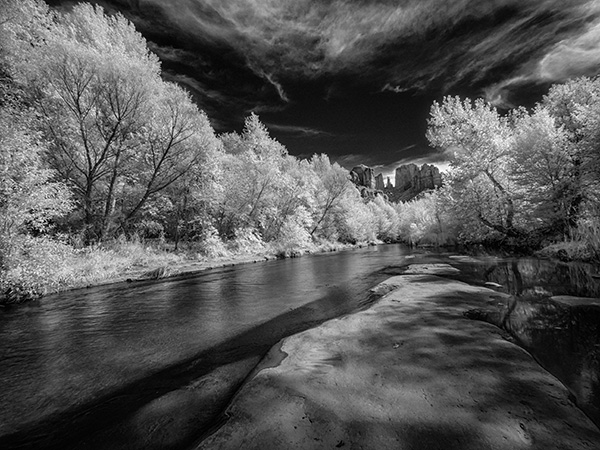
We don’t have a lot of deciduous trees in Sedona, but the banks of Oak Creek lead a parade of trees down from Flagstaff. Having the color information available in the file and Layers and Masks in Photoshop allowed me to create the contrast and tones I was looking for…
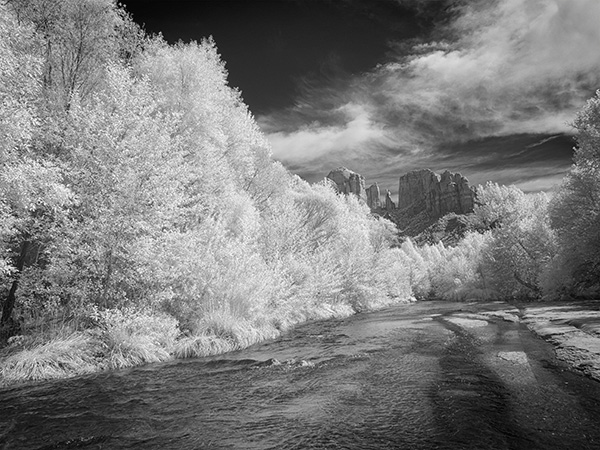
Same scene from a slightly different angle and different processing lead to an image, while still BW IR has a totally different feel than the one above.
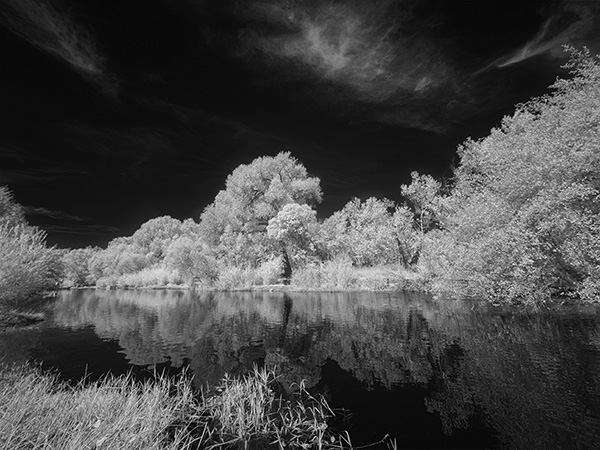
As always don’t forget to turn around… Many times there is an enticing image waiting behind you.
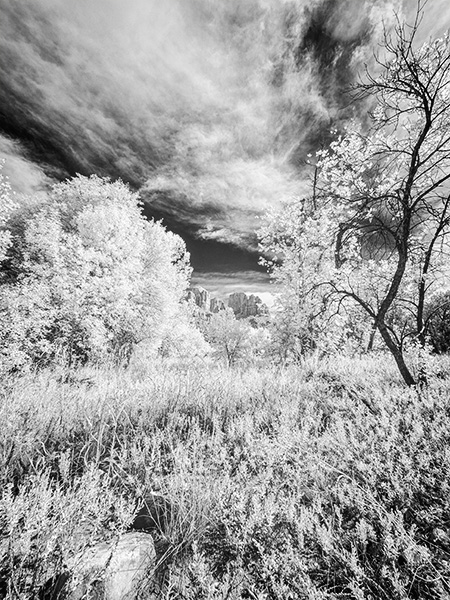
Moving off the creek banks led to this….
I see IR as a great new tool in my quiver. Makes photographing at mid-day very interesting. Can’t wait until I start to learn more about new capture and processing ideas to really push the look.
Yours in Creative Photography, Bob
by successfulbob | landscape photography, Lumix GX8, panorama, photography education, photography gear
I really enjoy the field of view you can achieve with a panoramic photo. The Lumix GX8 is pretty solid with the in-camera stitching when you need a quick capture of the scene for sharing… And with this version going to print. There are still some occasional stitching errors in areas with lots of confusing crossing details or areas with hardly any detail but I had to look really, really hard to find a small error in one of the tree clumps… Sweet!
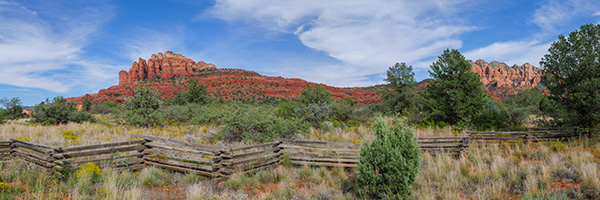
This is the view on the way to Cathedral Rock in Sedona, Arizona. Heading down Verde Valley School Road in the Village of Oak Creek (view of the right side of Cathedral Rock)
Here’s a tip that some people don’t think of when creating Panos. Turn the camera to the vertical position as you make your capture. This will give you some more vertical room. You can also capture a next ‘row’ of image and stitch them together in Photoshop or your favorite Pano program.
One more thought to help get smoother stitching… Point your feet toward or slightly past where you would like the pano to end. Then pivot your stomach muscles to the beginning of the captures and use your stomach muscles to move the camera with your elbows tucked in and the camera touching your forehead.
Yours in Creative Photography, Bob
by successfulbob | photography - art quote, photography education
Do photographers and artists tend to be a bit picky?
You betcha!!
Some, not picky enough.
Most of us are both!
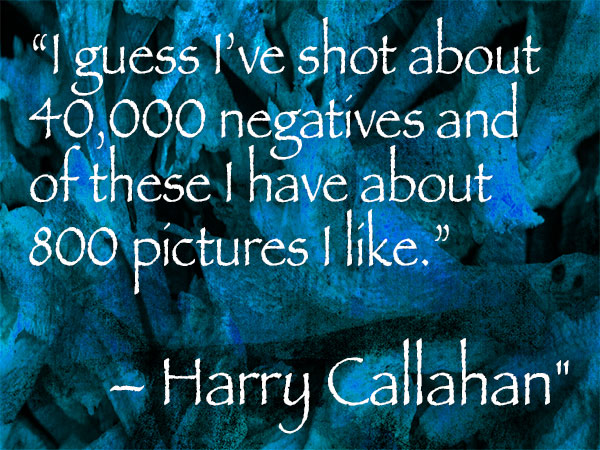
“I guess I’ve shot about 40,000 negatives and of these I have about 800 pictures that I like.” Harry Callahan
Harry Callahan was a self taught photographer who felt he made few solid images. This from Wikipedia, “His technical photographic method was to go out almost every morning, walk through the city he lived in and take numerous pictures. He then spent almost every afternoon making proof prints of that day’s best negatives. Yet, for all his photographic activity, Callahan, at his own estimation, produced no more than half a dozen final images a year.”
We take an awful lot of images every year but do we craft any? We also tend to want to have most of our images be considered very good images but we don’t necessarily take the time to work on creating a really strong piece? I just ask these questions to give you (and I) food for thought.
On the other hand I posit we do create some strong images but don’t think we do because we compare our complete body of work, including our tossers to another photographer’s fully finished work where we only see the finals not the work that went into them.
It is a two edged sword. We need to be confident and not overly critical in the work we produce, but we also need to edit ruthlessly. A conundrum and a fine line to walk if you want to be known as a great photographer.
Yours in Creative Photography, Bob
PS – Hoping this photo/art quote makes sense because it is being written at 2 AM…. (had coffee too late and can’t sleep)
by successfulbob | black & white, infrared photography, landscape photography, Lumix G6, Lumix Lounge, photography education, photoshop tutorial
OK. I went back to the same file I worked on yesterday and reprocessed using a couple different techniques. Here is the new version captured with the Lumix G6 and the 7-14mm f4 lens.
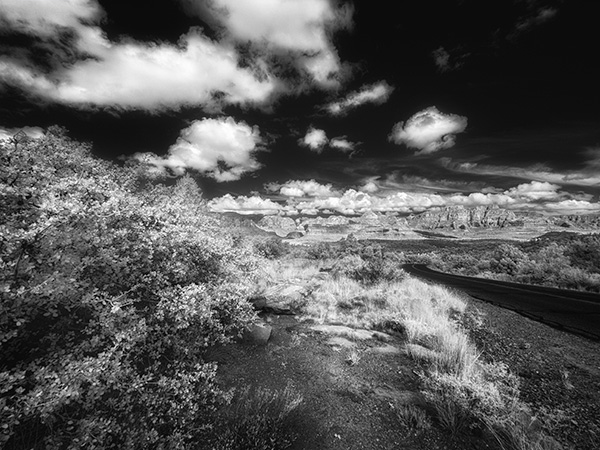
Different processing led to a cleaner more detailed IR image.
First I used Adobe Camera RAW to process the file twice. Once for the foreground which was in shadow and again for the background which was in full sun. Using a Layer Mask I blended the two files together. Then using the Channel Mixer I swapped the Red and Blue Channel information as this file is still comprised of RGB information. When you first open the Channel Mixer adjustment Layer you’ll see the Output Channel set to Red at 100%. Change this to 0%. Go to the Blue color and change it to 100%. Then change the Output Channel to Blue and make the Red color 100% and the Blue color 0%. This is to give a ‘blue sky effect’. I didn’t like that effect so I kept going.
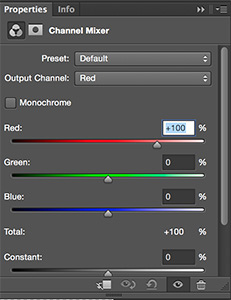
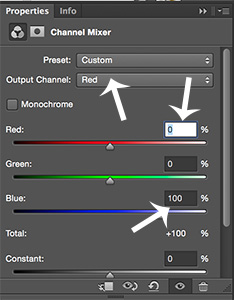
Swapping the Channels gave me a better image ultimately so I will keep this as part of my IR processing in the future.
Next using NIK Silver FX Pro 2 I converted to Black and White adding some mid-tone structure and fine structure. in NIK Color FX Pro 4 I added a bit of Glamour Glow with neutral color. This helped increase the IR look. A little goes a long way before you blow out some highlights so be careful here. Final bit of tweaking is a blank Layer set to Soft Light Mode using the Brush Tool with Black or White color to dodge and burn the image just a bit to control where the eye travels throughout the photograph.
Looking forward to working in IR more often. Gives a great look to noon-day sun images when you would normally refrain from making image captures.
Yours in Creative Photography, Bob
by successfulbob | black & white, infrared photography, landscape photography, Lumix G6, Lumix Lounge, photography, photography creativity, photography education
It’s a bit of a different world when you move into infrared imaging.
This is photography with a totally different look.
It used to be very difficult to capture infrared as the filters used to allow the non-visible light spectrum through were extremely dark making it difficult to see and frame your subject. The film was extremely sensitive and was quite susceptible to fogging ruining exposures before you even got them into the developer. In addition there was the need for focus adjustment as visible light focused on a different plane than the invisible spectrum which would often lead to out of focus images. And finally there was lots of grain in many of the captures.
Fast forward to today… I just received my Lumix G6 back from LifePixel after a conversion to allow the camera to capture infrared. It’s still not quite a piece of cake to create an infrared image but the capture sure got easy!
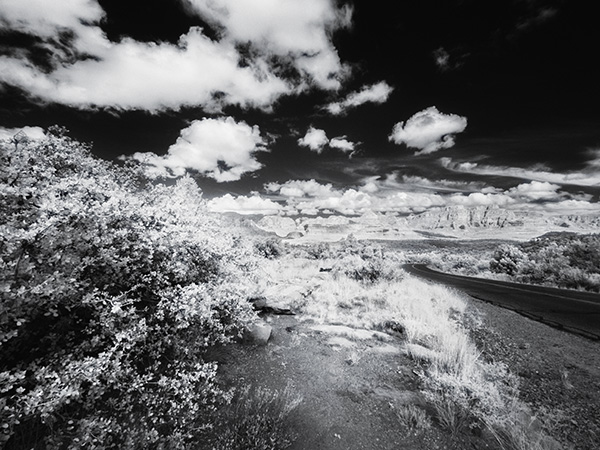
First infrared image from newly converted Lumix G6.
In this image the foreground area was in shadow so it wasn’t receiving the full infrared effect but the clouds, sky and rocks in the distance showed well. To combat this the image was triple processed. Once for the top half, and twice for the bottom to carry the infrared look through the image. Black and White conversion was made with NIK Silver FX Pro 2. Masks were applied to make the changes
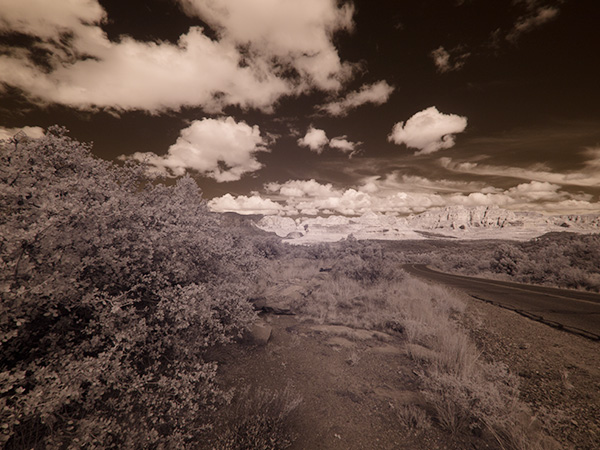
With the filter switched to a straight infrared filter you end up with a reddish sepia-tone image straight out of camera.
In order to have a better idea of what I was capturing as far as a final image of Black & White infrared I shot with a camera setting for Black & White. I then set the camera to capture RAW + Jpeg so I would have all the information presented to the camera but also have a quick BW in the jpeg.
There is another way to process the images (well probably as many ways as there are photographers) which I’ll share in another post using Photoshop Channels.
Yours in Creative Photography, Bob
Here are some links to my follow-up IR posts
https://chd.lzi.mybluehost.me/infrared-imaging-part-2/
https://chd.lzi.mybluehost.me/infrared-photography-part-three/
https://chd.lzi.mybluehost.me/gila-wilderness-infrared-photos/
by successfulbob | black & white, Lumix GX8, Lumix Lounge, people photography, photography
It is a lesson in asking.
When we are out and about we run across people who have character. People who have lived long and are happy to share about their lives if you only open the dialog. Over the years I have met or seen many people that I would have liked to have photographically captured an image of but was too nervous to ask.
I’m finding that I get more interesting conversations and life stories when I ask and share my wish to capture an image. People who know me might say, “Bob, SHY??! You’ve got to be kidding me?” But I have let situations go by where I just didn’t feel comfortable asking to create an image. usually it was all in my own head and I’m getting better thanks to spending time with Levi Sim. Levi is a wonderful person who connects with people in a great way. I enjoy his techniques for getting to know people and making them comfortable in front of the camera in a nano-second. When I was with Levi in Chicago I watched as he approached a guy on a motorcycle, in traffic, and had him maneuvering his bike in order to get a better background. The guy was happy to do it… Remember this is in traffic, in Chicago.
Here’s Gary…
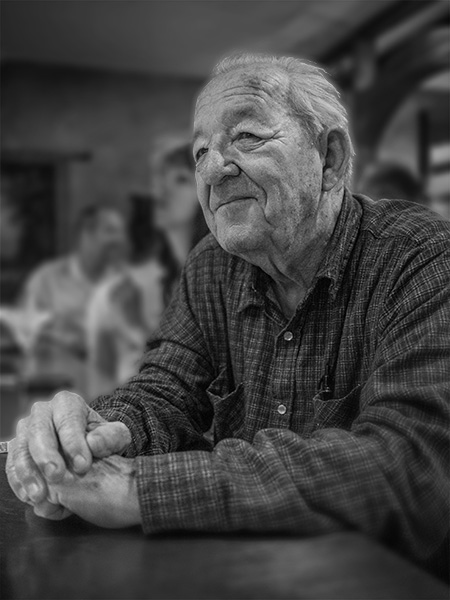
Met Gary at Bella Vita Ristorante in Sedona.
It was a wonderful conversation my wife and I had with Gary. He shared that he was born and raised in the desert. He loved tramping through the high Sierra Mountains where Ansel Adams created many of his iconic images. This came about because I had my camera (Lumix GX8) and after chatting with him asked if I might make a few exposures. He was flattered and we had a very pleasant time.
I had the 20mm 1.7 lens on and shot wide open. ISO 3200 This is a sweet piece of glass. I added just a bit of blur in the background to render the other people unrecognizable.
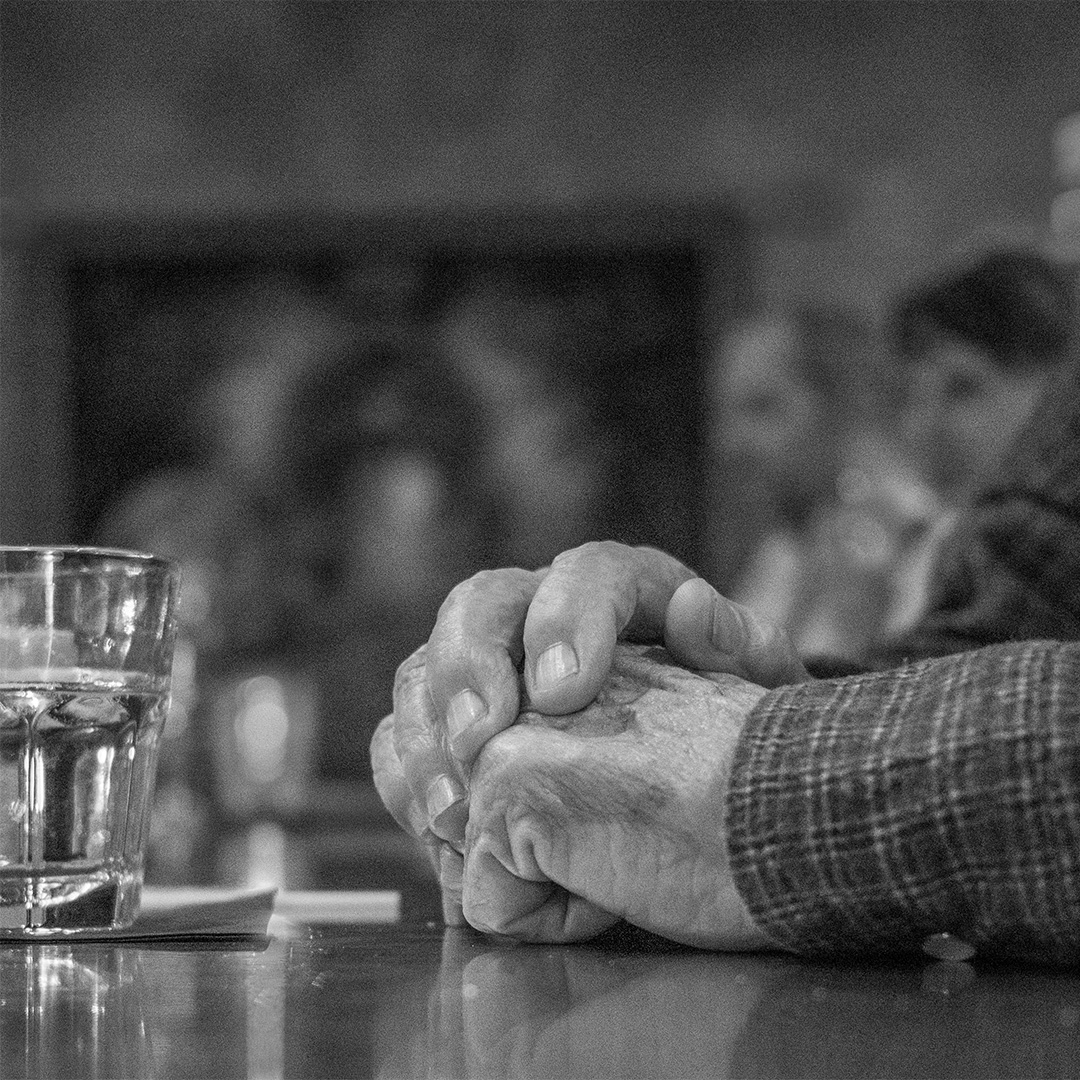
Word is eyes are the window to the soul. I find I enjoy seeing the results of the aging process on hands. Love the story I see here in Gary’s hands.
Yours in Creative Photography, Bob
by successfulbob | photography - art quote, photography creativity, photography education, success education
In seeking inspiration I will often head out of the photography realm and today is no different. Marcel Proust was a French writer of novels and essays. His quote that I share today has a lot to do with observation. And if we are to become excellent photographers we have to do more than just see what is around us. We need to be aware of possibilities that live around us all the time.
Many times when we travel we will get more creative because we are being exposed to new stimuli. What will help us be more effective image makers is being able to see the new among the apparent mundane around us all the time…
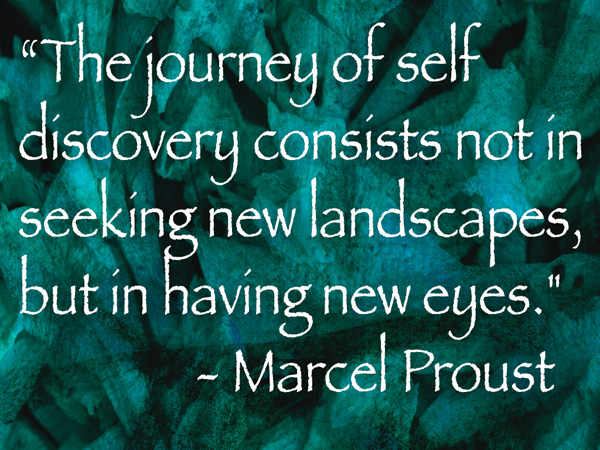
“The journey of self discovery consists not in seeking new landscapes, but in having new eyes.” Marcel Proust
Proust’s quote obviously doesn’t deal with image making but I feel the sentiment that he expresses for self discovery can be applied to our vision.
Remember, there is looking.
There is seeing.
And, then there is vision.
Go deeper.
Yours in Creative Photography, Bob























